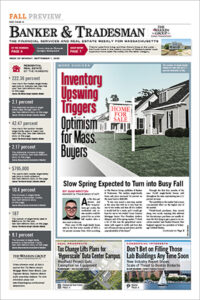
Lew Sichelman
One of the first questions buyers ask these days is: How far over the asking price should I go to get the house I want? Obviously, it all depends. But broker David Rathgeber of Your Friend in Real Estate in Arlington, Virginia, has a formula for his market, where nearly two-thirds of all buyers find themselves in competitive situations.
For a 90 percent chance of success, Rathgeber said that Northern Virginia buyers need to offer about 12 percent over the asking price. For an 80 percent chance, offer about 9 percent over. Going 5 percent over, he said, only gives buyers in that market a 50 percent chance of winning the house.
You also “gain a significant advantage” if you can avoid financing and appraisal contingencies by paying cash, Rathgeber advises. And if none of that is feasible, “a reasonable alternative might be to just wait a couple years.”
Another tip: When you specify the amount by which you are willing to beat other offers, make that figure end in $500 – as in $3,500 rather than $3,000. “Avoiding round numbers will give you an edge over 90 percent of other offers,” Rathgeber said.
Of course, buyers should only offer above list price if they really want the house, it’s been on the market for less than 10 days, and they have been assured there are other offers on the table.
Homebuilders Behind
Here’s more proof home builders are continually falling behind demand: In 2019, the median age of owner-occupied homes was 39 years, according to the latest data from the U.S. Census Bureau. In 2005, it was 31 years.
Even though builders added nearly 5.4 million units to the national housing stock between 2010 and 2019, those properties accounted for just 7 percent of the total. On the flip side, more than half of the country’s houses were erected prior to 1980, and 38 percent were built before 1970.
Older houses possess a certain charm that is difficult to replicate. But they are often in need of remodeling and updating. And outdated components such as heating and air conditioning systems usually have to be replaced.
According to a new report from LendingTree, the metro regions with the largest share of homes built in or before 1939 are Boston; Providence, Rhode Island; and Buffalo, New York. The smallest share of old homes are found in three of today’s hottest markets: Las Vegas, Phoenix and Orlando.
Construction Workforce Aging
Along with homes themselves, the construction workforce is also aging, the Census Bureau reports. The median age in the field is 41, which is in line with the nation’s labor force in general. But finding skilled labor is still a challenge for builders.
Older construction workers tend to be concentrated in managerial posts, the National Association of Home Builders reports. The youngest are helpers, tradespeople and solar panel installers.
Builders, suppliers and subcontractors have been adding workers in some areas, but those in 21 states lost workers. While Illinois added 4,000 construction jobs between March and April, the red-hot Texas market lost 13,600, NAHB reports.
Overall, the sector added 917,000 jobs year-over-year in April – a 14 percent increase. Nevertheless, the number of unfilled positions is increasing as builders strive to meet demand. The trade group said 357,000 construction industry positions went unfilled in April – the largest number in nearly two years.
Many construction people are self-employed. At 22 percent, the sector’s independents are significantly higher than the economy-wide average of 9.7 percent. Still, the self-employment rate in housing is now the lowest on record.
One reason for the slide is that self-employment rates are counter-cyclical, rising during an economic downturn and falling during an expansion. When the workflow is rising, as it is now, many of these former independents sign on with other contractors as employees. Another factor: The largest builders, who tend to dominate their markets, are more likely to work with larger subcontractors and their bigger payrolls.
‘Handwritten’ Love Letters
Nearly 40 years ago, your intrepid reporter stumbled upon a computer program that wrote ads for properties. Not only wrote them, but wrote them better than most agents and brokers could ever do.
That program, AdWriter, is still going strong. And now comes another: Handwrytten, which helps with those sappy love letters from buyers trying to persuade sellers to choose them.
Handwrytten doesn’t compose letters, but it will make your words legible – even pretty. The company claims that notes created with Handwrytten are indistinguishable from those written by the human hand. There are 23 styles to choose from, or users can upload their own handwriting and signature for a truly personalized style.
Attaching love letters to offers is a divisive tactic. Some agents hate the letters so much that they will destroy them before presenting the offers to clients. But other agents think they’re great. One agent recently reported he sold two houses this year because the sellers were taken with the missives attached.
And Handwrytten said not only are would-be buyers using its program, agents are using it, too.
Lew Sichelman has been covering real estate for more than 50 years. He is a regular contributor to numerous shelter magazines and housing and housing-finance industry publications. Readers can contact him at lsichelman@aol.com.





